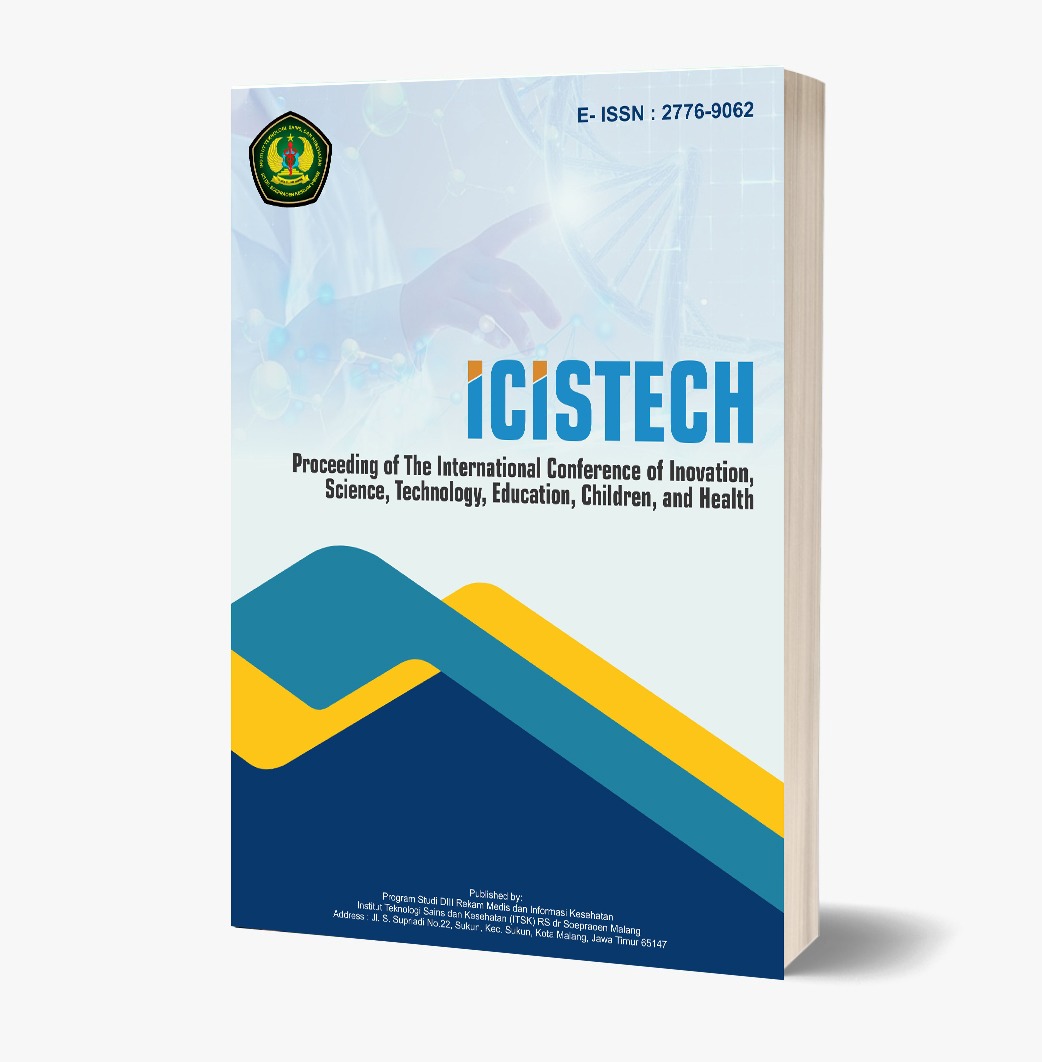Quantitative Study of the Factors That Influence the Incidence of Low Birth Weight
DOI:
https://doi.org/10.62951/icistech.v3i1.60Keywords:
Factors, Low Birth Weight Baby, Quantitative StudyAbstract
Background: Adolescents undergo changes where In Indonesia, the incidence of LBW is still relatively high, this is evidenced by the presence of data which shows that the birth rate of babies with normal weight is still below the expected rate. The global prevalence of LBW is 15.5%. A total of around 20 million LBW are born every year and 95.5% of them come from developing countries. The infant mortality rate (IMR) in Indonesia increased in 2012 from 19 per 1,000 live births to 22.23% per 1,000 live births (SUPAS, 2015). Based on the results of the East Java National Socio- Economic Survey (Susenas) 2011–2013, the infant mortality rate (IMR) in East Java in 2013 was 27.23% per 1,000 live births (East Java Province Health Profile, 2014). Purpose: This study aims to determine the factors that influence the incidence of low birth weight babies. Method: This type of research is analytic observational. With the analytical design of the case study study (case study) and using a retrospective approach. The sample used in this study was an accidental sample of all babies born at Bangil Hospital, Pasuruan Regency with birth weight less than 2,500 grams, as many as 34 babies. Result: From the results of research conducted at Bangil Hospital, Pasuruan Regency, the results of the factors that influence the occurrence of low birth weight in Bangil Hospital, Pasuruan Regency, namely, the nutritional factors of pregnant women with a result of 58.8%, Parity of a mother who experiences pregnancy> 4 times tends to experiencing low birth weight with a percentage of 29.4%, followed by maternal age as much as 14.7%. Conclusion: It is expected that pregnant women with high risk factors for pregnancy in the categories of pregnant women <20 years, parity of pregnant women> 4x, and nutritional status (LILA <23.5cm) can reduce the incidence of low birth weight at Bangil Hospital, Pasuruan Regency.
References
Budiman. (2013). Health research. Bandung: Refika Aditama.
Fitriani. (2013). Analysis of factors associated with the incidence of low birth weight infants in RSKDIA Pertiwi Makassar in 2014 (Unpublished thesis). Fakultas Kesehatan Masyarakat, Universitas Hasanuddin, Makassar.
Hidayat, A. A. A. (2010). Midwifery research methods and data analysis techniques. Jakarta: Salemba Medika.
Kusumaningrum, A. I. (2012). The relationship between mother factors and the incidence of low birth weight infants in the work area of the Gemawang Public Health Center, Gemawang Subdistrict, Temanggung Regency, Central Java Province in 2012 (Unpublished thesis). Fakultas Kesehatan Masyarakat, Universitas Indonesia, Depok.
Maryunani, A., & Puspita, E. (2013). Maternal and neonate emergency care (1st ed.). Jakarta: Trans Info Media.
Merzalia, N. (2012). Determinants of low birth weight incidence in East Belitung Regency, Bangka Belitung Islands Province 2010-2012 (Unpublished thesis). Fakultas Kesehatan Masyarakat, Universitas Indonesia, Depok.
Mitayani. (2011). Maternity nursing care. Jakarta: Salemba Medika.
Muslihatun, W. N. (2014). Infant and toddler care (5th ed.). Yogyakarta: Fitramaya.
Notoadmodjo, S. (2012). Health research methodology. Jakarta: Rineka Cipta.
Novita, V. T. (2011). Maternity nursing. Bogor: GI.
Nursalam. (2011). Concept and application of nursing research methodology. Jakarta: Salemba Medika.
Saepudin, M. (2011). Public health research methodology. Jakarta: TIM.
Setiadi. (2013). Concepts and practices of nursing research writing. Yogyakarta: Graha Ilmu.
Sturdy. (2014). Neonate care. Yogyakarta: Student Library.
Sugiyono. (2011). Qualitative quantitative research methods and R & D. Bandung: Alfabeta.
Sulistyaningsih. (2011). Midwifery research methodology. Yogyakarta: STIKES Aisyiyah Yogyakarta.
Yafie, E., & Haqqi, Y. A. (2019). Development application “Detection of growth and development for newborn until two years” based on Android. International Journal of Recent Technology and Engineering (IJRTE), 8(11C), 113-123. ISSN 2277-3878.
Downloads
Published
How to Cite
Issue
Section
License
Copyright (c) 2023 Proceeding of The International Conference of Inovation, Science, Technology, Education, Children, and Health

This work is licensed under a Creative Commons Attribution-ShareAlike 4.0 International License.













